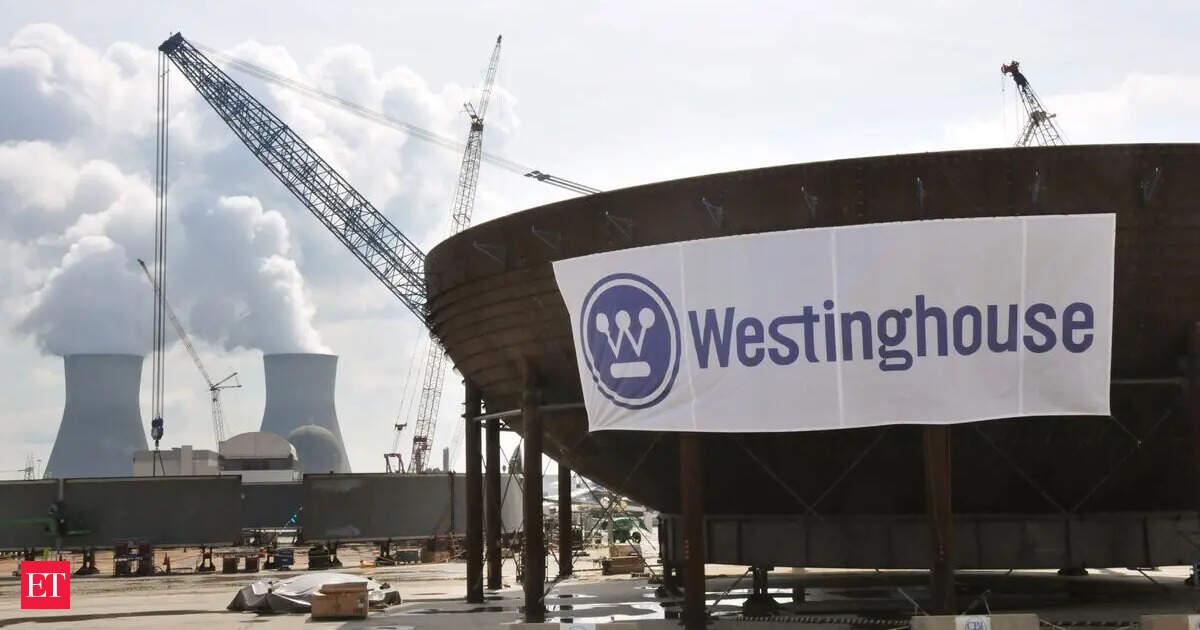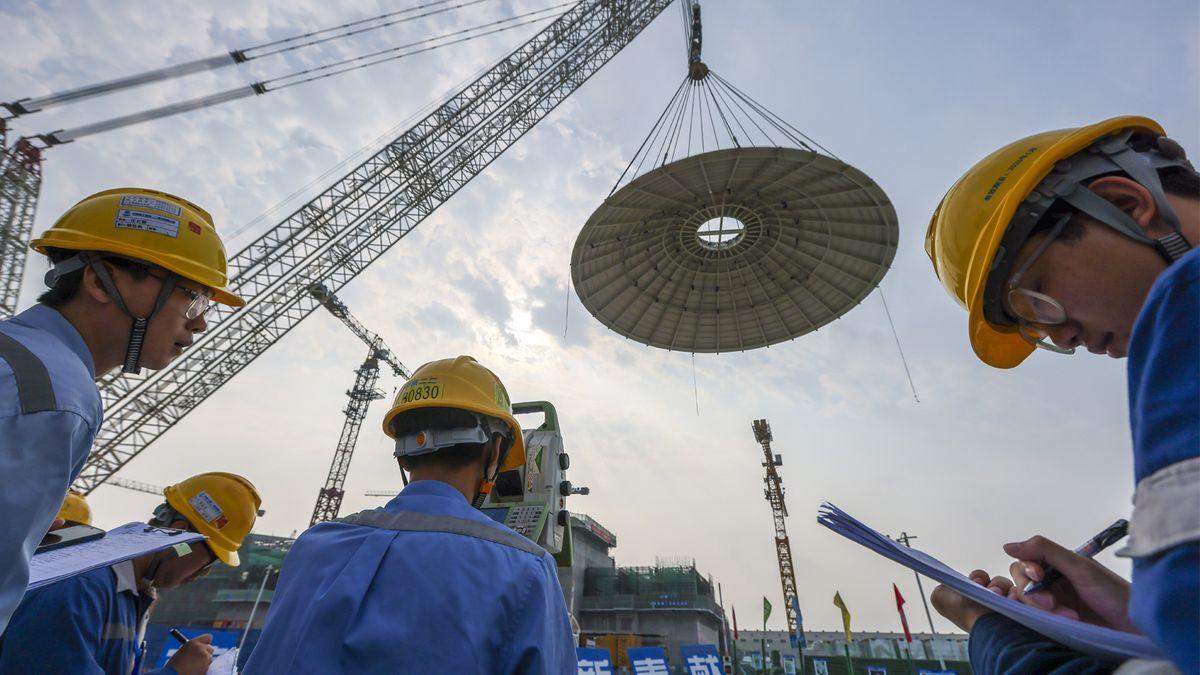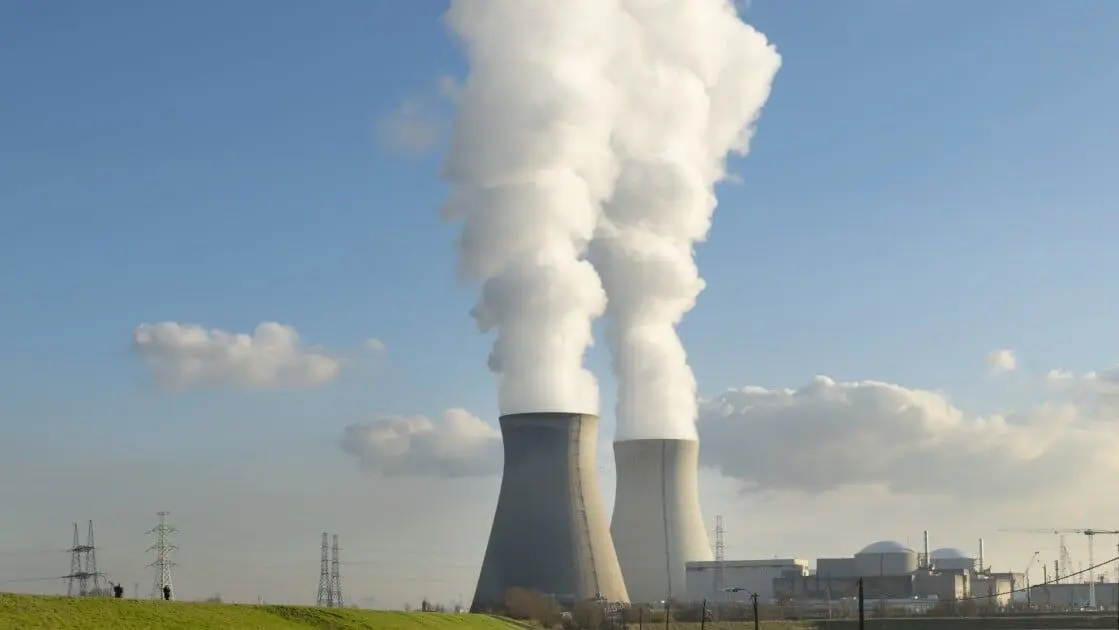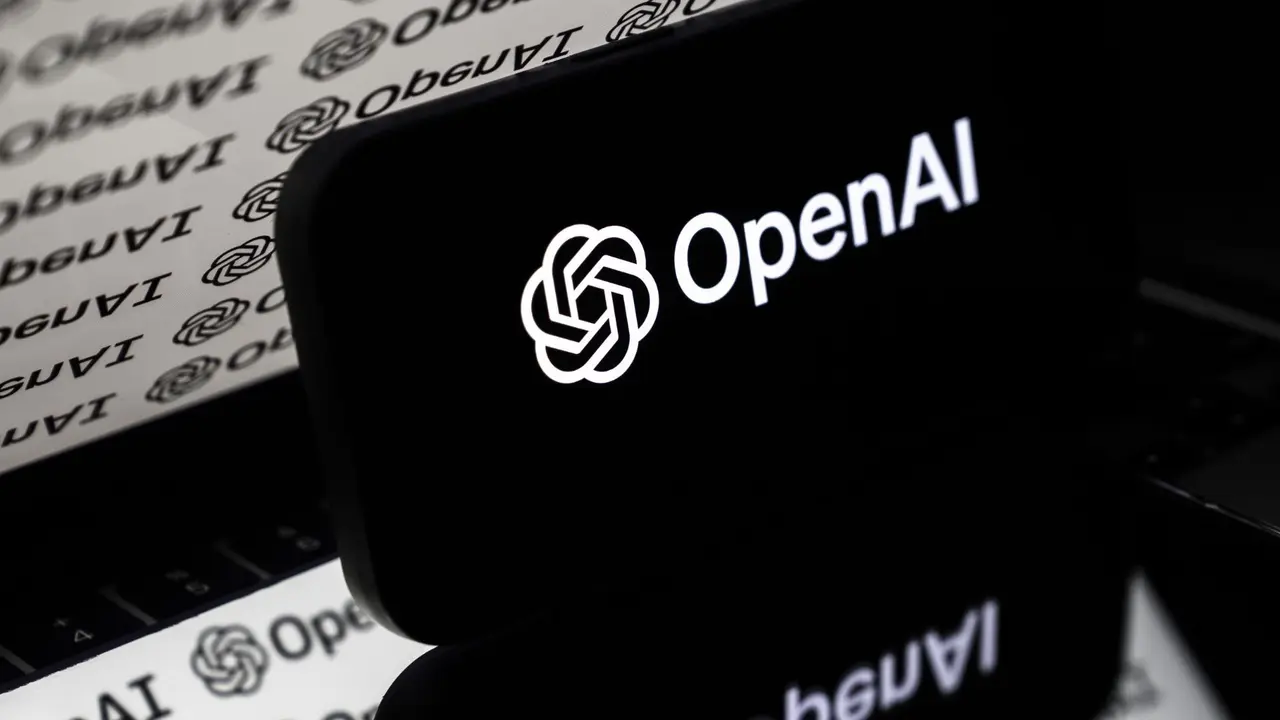Trump Administration Strikes $80 Billion Nuclear Deal to Power AI Data Centers
2 Sources
2 Sources
[1]
U.S. inks $80 billion deal with Westinghouse for nuclear reactors
Cooling towers are shown at the Alvin W. Vogtle Electric Generating Plant in Waynesboro, Georgia, in May 2024. (Mike Stewart/AP) The Trump administration will take a stake in at least $80 billion of new nuclear reactors that it sees as key to continuing to develop AI technologies through a deal it inked with the parent companies of nuclear developer Westinghouse. The reactors would be at least in part funded by Japan, which agreed to invest $100 billion in Westinghouse projects built in the U.S. with the help of Japanese contractors, according to a fact sheet published by the Japanese government. The deal, announced Tuesday morning by Westinghouse's owners, does not specify how much U.S. taxpayers would spend to help construct the AP1000 reactor units the Trump administration wants built. Investments in the reactors can be risky, because large nuclear projects are routinely beset with massive cost overruns and long delays. The last AP1000 units built in the U.S. were installed in Georgia, and ended up costing nearly double the initial projection -- adding an unanticipated $17 billion to the price tag. The project was completed seven years behind schedule. But when operating successfully, the plants provide unrivaled amounts of energy, with each rector generating enough electricity to power more than 800,000 homes. The technology is considered by large tech companies and the administration to be a linchpin to the advancement of AI innovation, as it can fuel data centers that now consume the electricity equivalent of entire cities. The administration made the deal with Brookfield Asset Management and Cameco Corp., which jointly own Westinghouse. The units use light-water reactor technology that has long fueled U.S. nuclear power. Notably absent from the announcement are next generation nuclear technologies championed by the administration, and which promoters say are safer and more nimble than legacy reactors. The companies trying to bring such plants to market have been hit with repeated engineering and supply chain setbacks and have yet to connect a single such reactor to the power grid. The $80 billion agreement stems from executive orders President Donald Trump signed earlier this year, aimed at reviving nuclear power. One of the orders called for the development of at least 10 large, legacy reactors. "This historic partnership with America's leading nuclear company will help unleash President Trump's grand vision to fully energize America and win the global AI race," Energy Secretary Chris Wright said in a statement. "President Trump promised a renaissance of nuclear power, and now he is delivering." The partnership is designed with "profit sharing mechanisms" that provide U.S. taxpayers returns "once certain thresholds are met," according to the announcement. It does not specify what those thresholds or returns are -- or how they will be spent. The Trump administration's plan for a huge build-out of nuclear power remains controversial. Roughly 90 percent of the new energy on the power grid over the last year has come from wind and solar power, coupled with battery storage. Such energy is less reliable than nuclear power but considerably cheaper. Some energy economists warn a massive build-out of nuclear power could take decades and come at a steep cost to ratepayers and taxpayers. The artificial intelligence industry is desperate for power now. The administration is trying to meet their needs by fast-tracking the approval process for new nuclear plants, an approach that brings its own risks. The U.S. Nuclear Regulatory Commission has long set the gold standard for safety in the industry worldwide. But the commission is under intense strain as the administration works to erode its independence. Since Trump took office, two of the five NRC commissioners have left the agency before the end of their terms. One of them was fired by the administration, an unprecedented action by the White House that jarred the industry.
[2]
US inks $80 billion pact to boost nuclear power
A landmark collaboration is set to unfold as the US government partners with three innovative firms, committing to the development of nuclear reactors estimated at over $80 billion. This strategic investment is designed to elevate the output of atomic energy, specifically to meet the burgeoning power needs linked to artificial intelligence data centers. At least $80 billion of nuclear reactors will be built across the United States in a partnership with the U.S. government, the three companies involved in the project said on Tuesday. The plan represents one of the most ambitious U.S. investments in atomic energy in decades, underscoring President Donald Trump's agenda to maximize energy output, focused on oil, gas, coal and nuclear. It also comes as growth in artificial intelligence data centers boosts U.S. power demand for the first time in two decades, straining parts of the grid. Under the agreement with Westinghouse Electric, Cameco and Brookfield Asset Management, the U.S. government will arrange financing, and will help secure permits for the plants using Westinghouse reactors. In return, the U.S. government would be granted a participation interest that, once vested, will allow it to get 20% of any cash distributions in excess of $17.5 billion made by Westinghouse, the companies said. The companies did not say when the U.S. government interest would vest, but added that the government must make a final investment decision and enter agreements to complete construction of the plants. U.S.-listed shares of Cameco were up more than 21% in midday trading. Building new U.S. nuclear reactors has been difficult due to soaring costs as well as public concern about potential accidents and nuclear waste. The last two U.S. reactors built at the Vogtle site in Georgia in 2023 and 2024 were about seven years behind schedule and cost about $35 billion, more than double an original estimate of $14 billion. No large reactors are currently under construction. The Trump administration in May ordered the U.S. Nuclear Regulatory Commission to slash regulations and fast-track new licenses for reactors, seeking to shrink a multi-year process down to 18 months. The order called for 10 new large reactors under construction by 2030. The administration also reviewed staffing levels at the independent agency, which led some critics to question whether permits would be rushed at a risk to safety. The NRC said it would respond to a request for comment about the deal once it has returned to full operations after the government shutdown. The Department of Energy did not immediately respond to a request for comment. Critics also point to the fact that there is no permanent U.S. repository for radioactive waste, which remains dangerous for thousands of years. It is currently kept on site at nuclear plants in cooling pools and then moved into hard casks. Still, momentum around nuclear is being driven by surging round-the-clock power demand from the so-called hyperscalers that operate massive cloud-computing infrastructure to manage rising artificial-intelligence processing. On Monday, NextEra Energy and Google struck a deal to restart an idle nuclear plant in Iowa. As part of the new partnership, the government may also require Westinghouse to make a public offering of its shares, if a participation interest vests and the company reaches a valuation of $30 billion or more by January 2029, the companies said. Cameco and Brookfield Renewable Partners completed the $7.9 billion acquisition of Westinghouse in 2023, including debt. Brookfield Business Partners had previously acquired the company from Toshiba Corp out of bankruptcy in 2018 for $4.6 billion. The new reactors would feature Westinghouse's advanced nuclear technology. Tech giants including Google, Microsoft, and Amazon have already inked deals to source power from next-generation nuclear technologies, such as fusion and small modular reactors. Constellation Energy and Microsoft have partnered to revive a unit of the Three Mile Island plant in Pennsylvania to power Microsoft's data centers.
Share
Share
Copy Link
The U.S. government partners with Westinghouse and Japanese investors in an ambitious $80 billion nuclear reactor project aimed at meeting surging electricity demands from AI data centers, marking one of the largest atomic energy investments in decades.

Historic Nuclear Investment to Power AI Revolution
The Trump administration has announced a landmark $80 billion partnership to construct new nuclear reactors across the United States, marking one of the most ambitious atomic energy investments in decades. The deal, involving Westinghouse Electric, Cameco Corp., and Brookfield Asset Management, is specifically designed to meet the surging electricity demands from artificial intelligence data centers that now consume power equivalent to entire cities
1
.Japanese Investment and International Collaboration
Japan has committed to investing $100 billion in Westinghouse projects built on U.S. soil with assistance from Japanese contractors, according to a fact sheet published by the Japanese government. This international collaboration underscores the global significance of the nuclear energy expansion, as countries recognize the critical role of reliable power generation in maintaining competitiveness in the AI race
1
.The partnership includes "profit sharing mechanisms" that would provide U.S. taxpayers returns once certain undisclosed thresholds are met. Under the agreement, the U.S. government would receive a 20% stake in cash distributions exceeding $17.5 billion made by Westinghouse, though the companies have not specified when this government interest would vest .
AI Data Centers Drive Energy Demand
The nuclear expansion directly addresses the unprecedented power requirements of artificial intelligence infrastructure. Major technology companies including Google, Microsoft, and Amazon have already secured deals to source power from nuclear technologies, recognizing that AI data centers require round-the-clock electricity that renewable sources like wind and solar cannot consistently provide. Each AP1000 reactor unit generates enough electricity to power more than 800,000 homes, making nuclear power essential for supporting the massive computational demands of AI systems
1
.Related Stories
Regulatory Fast-Tracking and Safety Concerns
The Trump administration has ordered the Nuclear Regulatory Commission to dramatically reduce approval times for new nuclear plants, aiming to shrink the multi-year licensing process to just 18 months. This aggressive timeline is part of an executive order calling for 10 new large reactors under construction by 2030. However, this accelerated approach has raised concerns about maintaining safety standards, particularly as two of the five NRC commissioners have left the agency before completing their terms since Trump took office
1
.Financial Risks and Historical Challenges
The nuclear investment carries significant financial risks, as evidenced by recent U.S. nuclear projects. The last AP1000 units built at Georgia's Vogtle plant were completed seven years behind schedule and cost nearly double the initial projection, adding an unanticipated $17 billion to reach a total cost of approximately $35 billion. These cost overruns and delays highlight the challenges facing large-scale nuclear construction projects
1
.Despite these risks, market confidence appears strong, with U.S.-listed shares of Cameco rising more than 21% in midday trading following the announcement. The deal may also require Westinghouse to pursue a public offering if the company reaches a valuation of $30 billion or more by January 2029.
References
Summarized by
Navi
[1]
Related Stories
Small Nuclear Reactors: A Gamble to Power AI's Surging Energy Demands
29 Sept 2025•Technology

Google and Westinghouse Partner to Revolutionize Nuclear Reactor Construction with AI
17 Jul 2025•Technology

U.S. Energy Secretary Advocates for Nuclear Power to Meet AI's Growing Energy Demands
27 Feb 2025•Technology

Recent Highlights
1
AI Chatbots Sway Voters More Effectively Than Traditional Political Ads, New Studies Reveal
Science and Research

2
Google AI glasses set to launch in 2026 with Gemini and Android XR across multiple partners
Technology

3
EU Launches Antitrust Probe Into Google's AI Training Practices and Content Usage
Policy and Regulation




